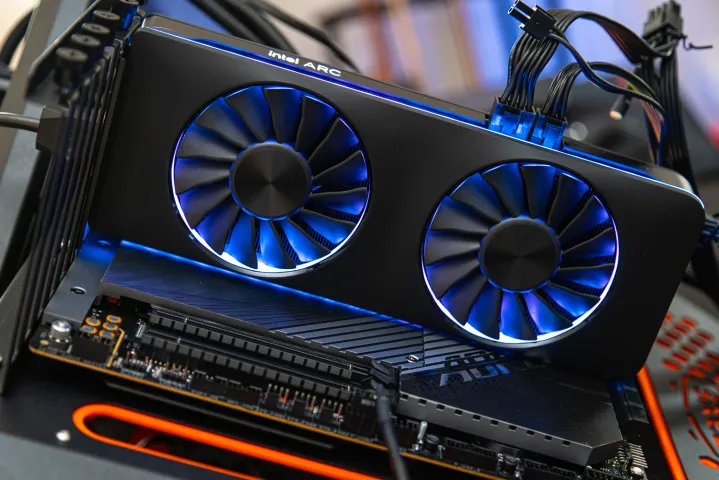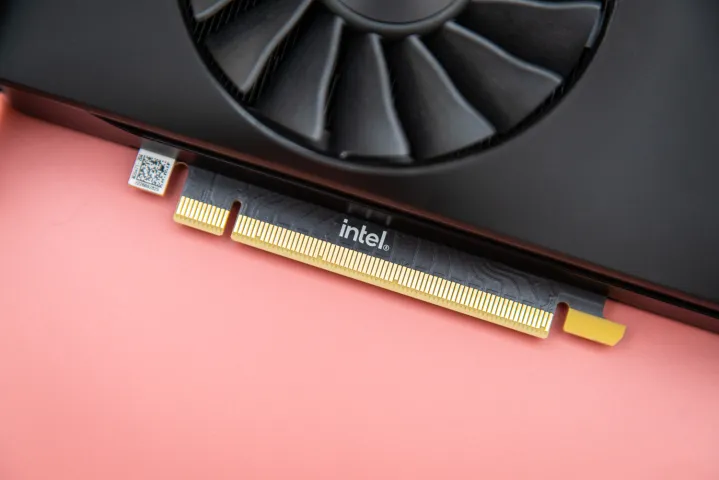
It’s already been an exciting year for graphics cards, but things are really about to start heating up. A series of leaks and rumors over the past year suggest that Nvidia, AMD, and Intel will all launch new GPU generations in the back half of 2024, with the three graphics behemoths’ offerings duking it out for a slot among the best graphics cards.
We’ve already seen graphics cards like the RX 7600 XT and RTX 4070 Super this year, but there could be many more in the tank. Although each of the three major graphics brands have confirmed that next-gen GPUs are on the way, none of them have laid out a specific timeline. So, with the understanding that these release windows are still speculative, these are the GPUs launching this year that we’ll all be talking about heading into 2025.
Nvidia — RTX 50-series (Blackwell)

We originally expected Nvidia’s RTX 50-series GPUs — code-named Blackwell — to launch in early 2025, but recent rumors suggest the launch date is closer than that. Graphics card vendors have reportedly shared that the first two Nvidia GPUs in the next generation will release in the last few months of 2024. That would line up with Nvidia’s normal release cadence. The RTX 40-series launched in October 2022, while the RTX 30-series launched in September 2020.
In addition, a report from UDN says that industry analysts are positive about Nvidia’s typical biennial release structure, and they’re expecting an uptick in shipments in the back half of the year.
On top of the speculation, Nvidia has already launched its Blackwell architecture. The company introduced its Blackwell data center GPU, the B200, in March. In the last two generations, Nvidia launched data center GPUs sporting its next-gen architecture about six months before the consumer range released.
Nvidia won’t dump all of its new graphics cards right away, however. If RTX 40-series GPUs arrive this year, I suspect Nvidia will release two of them. Presumably, the RTX 5090 would arrive first, and then the RTX 5080 would show up about a month later. Nvidia hasn’t confirmed those names or that timeline, but it would line up with what we’ve seen in the past two generations.
Although signs point to Nvidia releasing Blackwell in the back half of the year, it’s possible things could slip into 2025. Nvidia has the advantage of being the market leader when it comes to GPUs, so it can sit by and wait to respond to what AMD and Intel have cook up. That’s a strategy we saw with the recent Super refresh to RTX 40-series GPUs, with cards like the RTX 4080 Super being a direct response to AMD’s lineup.
AMD — RX 8000 series (RDNA 4)

AMD is in a different position than Nvidia. As a company that releases both CPUs and GPUs, we can trace back its normal release cadence between the two product groups. AMD released its Zen 4 CPUs in September 2022, and its RX 7000 GPUs followed up in December that same year. Recent indicators suggest AMD is releasing Zen 5 CPUs in the next few months, setting up the RX 8000 for a launch later this year.
This alone is just speculation, but it’s backed up by close to a year of leakers claiming a similar timeline. Most agree that the GPUs are arriving in the second half of the year, but they disagree on the exact timing. Moore’s Law is Dead, a well-known leaker, claims to have sources within AMD that say the cards could arrive as soon as early fall if AMD wants to “rush.” However, all of the leakers’ sources claim that a winter release, either in late 2024 or early 2025, is more likely.
A big reason for the loose release schedule is that AMD is rumored to ditch high-end GPU options for its next-gen cards. The leaker crowd says that AMD is using its Navi 48 GPU as the flagship option, which is said to target a midrange segment. Given that Nvidia is only expected to launch its high-end options this year, it’s possible AMD could wait to see if this rumor holds up.
Although it’s tempting to blindly follow what the rumors say, there are some things that don’t add up. Both Moore’s Law is Dead and RedGamingTech claim that AMD will use a monolithic die for RDNA 4, and that doesn’t line up with what we’ve seen. Current-gen RDNA 3 GPUs like the RX 7900 XTX use a Multi-Chip Module (MCM) design, which AMD has seen great success with via its Ryzen CPUs. It doesn’t make much sense for AMD to ditch this design in the next generation.
All of that is to say that the rumor about AMD ditching high-end GPUs in the next generation is a bit flimsy. For now, it’s safe to say that AMD is likely targeting a late 2024 release for its RDNA 4 GPUs, and it’s even possible we could see a tease of them at this year’s Computex.
Intel — BXXX (Battlemage)

Rounding out the list is Intel Battlemage, which could be the first of the three we see this year. Intel has been surprisingly transparent on the progress of Battlemage, and things are already shaping up. At the beginning of the year, Intel’s Tom Petersen said that the hardware for Battlemage was already finished, claiming that about 30% of Intel’s graphics engineers were working on drivers.
More recently, a shipping manifest showing two Battlemage GPUs made the rounds. These weren’t shipping to customers, with the manifest showing that they were “for R&D purposes only,” but it shows that Battlemage is likely entering the final stages of validation. That lines up with a road map that was leaked last year, which showed Battlemage GPUs arriving between April and June of 2024.
Intel is slated to give a keynote presentation at Computex this year, which takes place in June. Although Intel will likely talk about its enterprise and AI efforts, it’s possible we could see Battlemage on the consumer front. We don’t expect Intel to talk about its next-gen CPUs at Computex, at least, leaving only Battlemage for consumer announcements.
As for what GPUs Intel will launch, it’s hard to say. The Arc A770 and A750 were the company’s first discrete GPUs, so we don’t have an established release cadence like we do with Nvidia and AMD. If Intel sticks with what it did in the previous generation, we’ll see two main GPUs release with Battlemage, and perhaps some lower-end options in 2025.
Rumor has it that Intel is targeting the performance of an RTX 4070 for its flagship card. If that’s the case, Intel will want at least a few months on the market uncontested by Nvidia and AMD. We saw that strategy with the A770 and A750, so it makes sense that Intel would use it again this generation.
Still an exciting year
Graphics cards work in two-year chunks, and 2024 is an exciting year no matter how you slice it. With Intel, AMD, and Nvidia already through their current-gen releases, and even a Super refresh behind us, it’s time for the next generation to show up. The timelines are still fuzzy, but one thing is for sure — next-gen GPUs are arriving in short order.
If you’re planning on upgrading your PC, it might make sense to wait until we see what the rest of the year holds. GPU prices are already dropping for multiple cards, clearing the shelves for new options at the end of the year.




